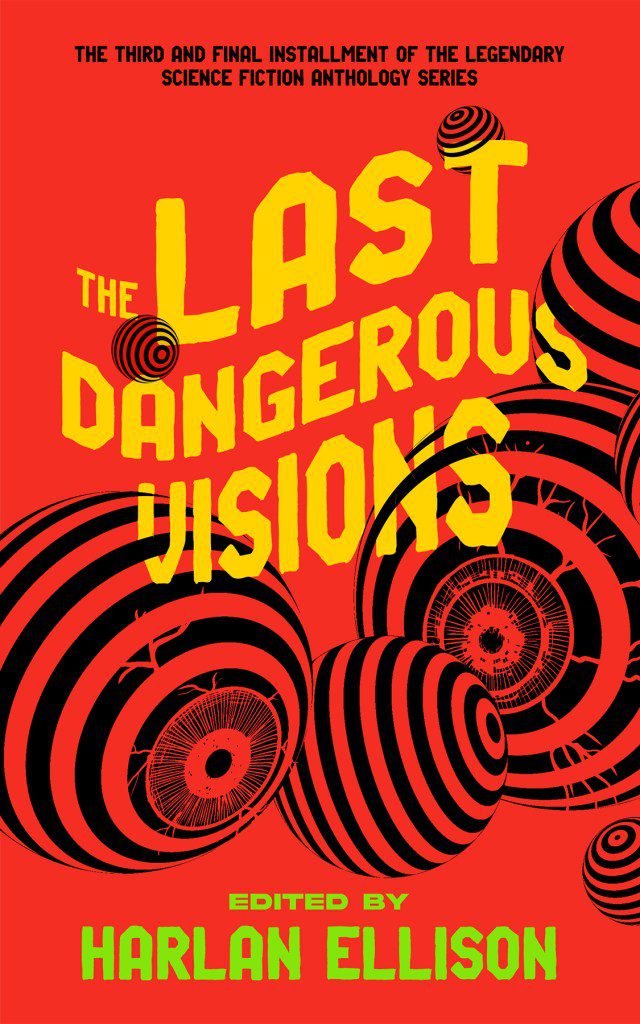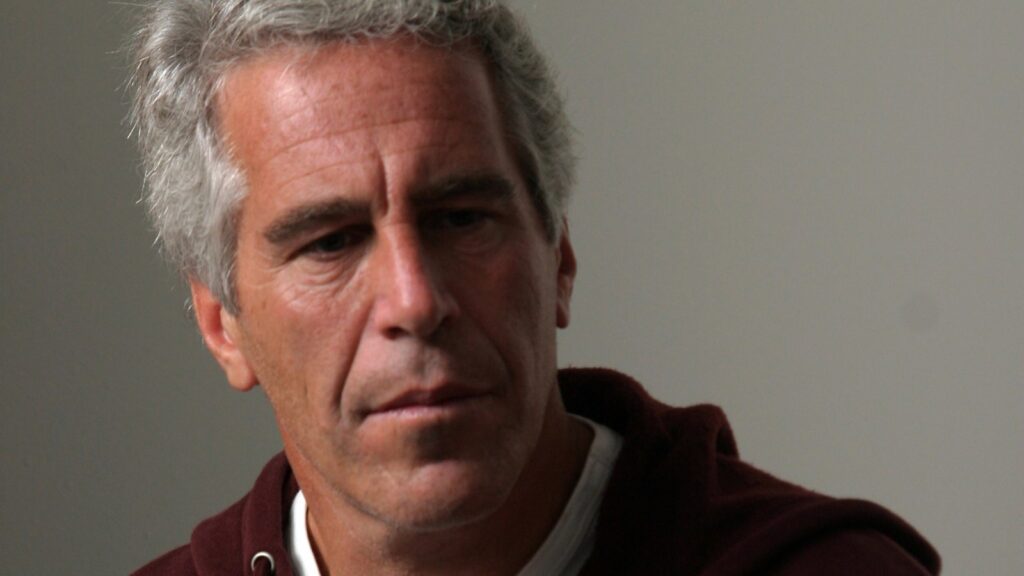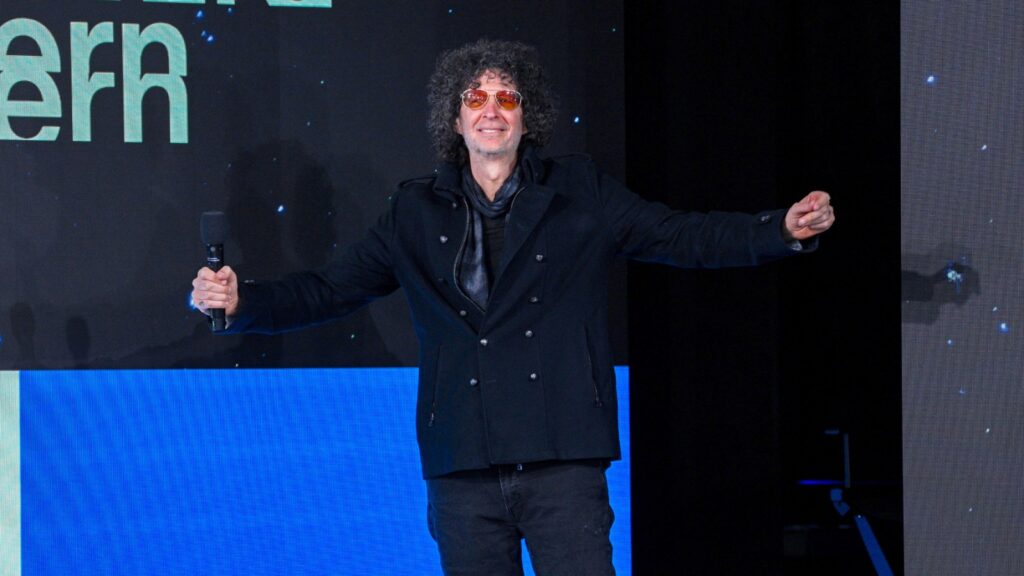Harlan Ellison’s ‘Last Dangerous Visions’ Hits Shelves 50 Years Later
Let me tell you a story about Harlan…
I talk to 10 people about Harlan Ellison and that’s how almost every conversation starts. If I’d talked to a hundred, it would’ve been the same. Because everyone has a Harlan Ellison story. Everyone who knew him, worked with him, argued with him, fought with him; everyone who was friends with him or claimed to be; everyone who was taught by him, learned from him, owes some portion of their career or life to him; everyone who loved him or hated him — they’ve all got a story about Harlan.
And that’s something. As far as a legacy goes, 1,700 short stories, books, essays, screenplays, graphic novels, and works of criticism and 10,000 stories left behind, to be told again and again by those who outlive you? That’s a life well-lived by any measure. Harlan marched with Martin Luther King Jr. in Selma. He took a job with Disney and got fired on his very first day. He got into it with Frank Sinatra in a Beverly Hills pool room one night in 1965 because Frank didn’t like his boots and Harlan couldn’t stand a bully. Problematic and wickedly talented, an iconoclast and an asshole, a jerk and a genius in unequal measure, he was one of the most prolific and dangerous voices of his time. And at maybe the last moment in American history when a writer could become legitimately famous, he was one of the most famous writers there was.
But when he died in 2018 (at home, in his bed, at 84 years old), he left one story untold. One story made up of a whole bunch of other stories, really. The third part of an anthology series called Dangerous Visions that he’d begun in 1967, continued with Again, Dangerous Visions in 1972, and promised to cap off with The Last Dangerous Visions which was announced in 1973, supposed to be published in 1974, and then… wasn’t.
And that isn’t such a big deal, right? The man published a hundred books in his lifetime. He wrote “I Have No Mouth and I Must Scream” and “Jeffty Is Five” and “A Boy And His Dog” and one of the best Star Trek episodes ever made (“The City On The Edge Of Forever”) and a story about aborted fetuses riding crocodiles in the New York City sewers. Weighed against that kind of scorecard, how could one more book possibly matter?
It matters because this book was different. Special in a way that only lost albums or missed connections truly can be. Over 50 years, TLDV (as the cool cats call it) had been promised, anticipated, maligned, dreaded, forgotten, and mythologized by generations of fans. In Harlan’s lifetime, it swelled to over 600,000 words, got split into three volumes (none of which ever materialized), shrunk down to half its size, then a third. It is undoubtedly the most famous science fiction book never published. And it haunted Harlan — physically, emotionally, and spiritually. At his home in Sherman Oaks, California, it literally sat, in pieces, stacked on the railing outside his office until the dust started gathering dust.
But now, decades later, Harlan’s great, unfinished project is finally going to see the light of day. Set to hit shelves on Oct. 1, The Last Dangerous Visions comes with all the weight of decades of impossible expectation and the relief of a last debt finally paid. And its existence as a finished, bound, actually readable object is thanks largely to years of efforts by Harlan’s friend, partner in crime and the executor of his estate, J. Michael Straczynski. Joe to his friends. To me, while I have him on the phone.
Joe says, “Let me tell you a story about Harlan.”
And then he does. He tells me about Harlan Ellison trying to buy a fax machine. How something so seemingly simple could, with the addition of Harlan, ultimately require a getaway driver. He tells another about Harlan bringing a baseball bat to a story meeting, just to make sure his points got heard. Another about Harlan arguing with Ray Bradbury (America’s sweetest doomsday prophet) about Walt Disney and America and capitalism — the two of them shouting themselves hoarse for hours because neither would give up an inch of rhetorical ground.
“He always had ways of surprising you in ways you don’t necessarily want to be surprised,” Joe tells me. “He was the one guy you wanted with you if there was going to be a fight. But if you were with him, then there was probably going to be a fight. It was a self-fulfilling prophecy.”
And it goes on like this for an hour, maybe more, because Joe has a thousand stories. A street kid who came up hard in Newark, he found Harlan by way of dime paperbacks shoplifted from local bookstores and would later fall into the older writer’s orbit in L.A. because they were both misfits, both fighters, both doggedly determined to make a life for themselves by selling words at bulk rates. Joe has had an enormous career as a writer and filmmaker. He created the TV show Babylon 5 and won awards for it, wrote the screen adaptation for World War Z, among a million other things. But long before that, he started the way so many of us do: as a scared, lonely, pissed off kid with a book. In his biographical quasi-introduction to TLDV titled “Ellison Exegesis,” Joe talks about discovering the first Dangerous Visions at 13 years old and what it meant to him:
In a lifetime spent in the company of words, there are only a handful of occasions when what I read blew the back of my head off, and reading Dangerous Visions for the first time counts as three of them. Before Dangerous Visions, I was a fan. Afterward, I became a fanatic… Whenever we moved and changed schools, my first coherent sentence upon being introduced to someone was always, ‘Have you read anything by Harlan Ellison?’
Some books, you read them, and it’s like swallowing fire. It’s like dropping acid for the first time or licking the wrong toad in the rainforest. There are books that open you up inside like origami and Dangerous Visions was like that for Joe and for thousands and thousands of people who found inside it voices that talked like the voices in their own heads. Who found friends between those cheap covers and who saw in those wild, brave, new stories a kind of permission to kick at the edges of the acceptable and say true things about subjects no one wanted to talk about out loud. Dangerous Visions told them it was okay to scream what, maybe, they’d only ever been able to whisper. And it said that EVERYONE had that power. That here, in this place, in this moment, your voice was the most dangerous weapon in the world.
“Shibboleth,” Joe says to me on the phone. Because that’s what Harlan was in the abstract, in his prime and after. His name like a password among the bungled and the botched: a secret word you could speak aloud to discover your people in a pre-internet world where finding one’s tribe was not always so simple. If you knew Ellison, you were cool. You got it. You understood, on some primal level, just how shitty the universe could be, how absolutely stacked against you, and how beautiful anyway.
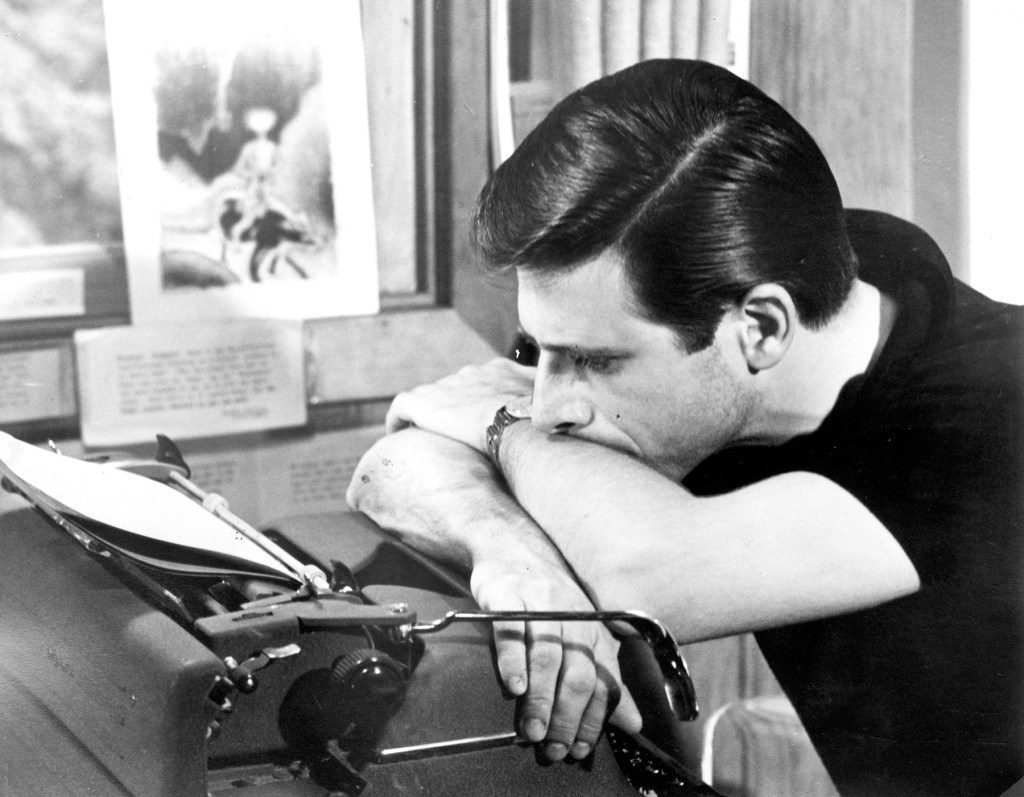
Courtesy of J. Michael Straczynski
That original Dangerous Visions was legendary. It featured new writers alongside famous ones (a collaborative model more or less unheard of at the time), took on topics like race and god and war and freaky space sex. It celebrated the New Wave movement in science fiction that would go on to invent the future we’re living in today, and stuck sparklers and road flares in it so no one could possibly claim they didn’t see it coming. The book was kinked to the frequency of chaos and revolution at a time when mainstream writers were afraid to speak truth to power lest it upset their ability to eat, and publishers were afraid to take chances on new voices. And since we find ourselves again in a similar moment, it’s only fitting that this final installment of Harlan’s anthology comes to the table with the same kind of blood on its teeth.
So here, now, in this cursed year, at history’s dumbest inflection point, we have the capstone to Harlan’s 50-year project. The Last Dangerous Visions gives us Stephen Robinett doing a school kid’s “What I Did Over The Summer” essay on the nightmare warehousing of the elderly and Max Brooks’s epistolary document on the asymetric warfare of hunger and panic. There’s stochastic, structural weirdness from John Morressy; a short, sharp wake-up call from all the things we refuse to see by David Brin; Cory Doctorow on forgiveness and robots; and Cecil Castellucci’s tale of a galactic food critic arriving at a terrible conclusion about how one might come to truly appreciate a culture through their food. With TLDV, Joe followed the model originally established by Harlan — new voices right next to the established ones, young outlaws and old masters together. From the universe of stories that Harlan selected for inclusion in TLDV (in all of its various iterations), Joe kept 24, plus a four-page introduction to Ed Bryant’s trippy “War Stories” written by Harlan himself and never before published. He then added seven more stories, newly commissioned for this publication — including “Binary System” by Kayo Hartenbaum which is about isolation, the loss of definition in the absence of societal constructs, and the conditional immortality of being useful to capitalism. It’s the first story that Kayo ever sold, and that, too, is in keeping with Harlan’s model because, 50 years ago, Harlan bought a story about torture and resistance called “Leveled Best” from a then-19-year-old unpublished writer named Steve Herbst that was supposed to be included in the original, non-existent 1974 edition. Joe included that one in TLDV, too.
“Harlan said, ‘Bring me your most secret dreams and I will publish them,’” Joe tells me — which was brave then (in the age of Nixon and the aftermath of the HUAC hearings) and is equally so now. And in talking with Harlan’s friends and fans, that word kept coming up: bravery. Threaded through all the stories of famous arguments and moments of extraordinary kindness, everyone would say how equal parts rage, frustration, plain cussedness and a street fighter’s bravado created in Harlan a kind of zero-fucks audacity that he pounded into every page he wrote, along with a switchblade sense of rhetorical violence that he gleefully turned on everything and everyone who disappointed him.
“He would be so much on the front lines right now,” Carol Cooper, the longtime Village Voice critic and culture writer, says when I catch her on a Zoom call. She was a student of Harlan’s at the Clarion Writer’s Workshop in 1974. He would become a mentor to her, and a friend. She tells me how he railed against “the orthodoxy of what Sam Delaney called the mundane fiction writers” who never met an original idea they didn’t distrust, and the anarchic glee that lived at the heart of even Harlan’s most controversial work. He was a man who hated inequality, hated bullies, hated hypocrisy. Who hated the systems that kept people from being who they truly were, and took them all on with the best means available to him: his words.
“I remember most how utterly fearless he was,” she says. “And if I wanted anything in my deepest little heart of hearts it was to acquire some of that bravery.” Because to be able to write the way he did — and to be able to do it with joy and an almost criminal abandon, like you’re just seeing how much you can get away with on the page — is a fearsome kind of power. And that was what Harlan inspired: a want for just a little bit of that courage, a little bit of that flamethrower heat.
Joe again: “Courage in writing was a necessity [with Harlan]. This was especially true when he was starting out in the late Fifties, a moment when the trial over Alan Ginsberg’s “Howl” was going on, and there was a massive emphasis on stomping out any kind of writing that crossed somebody’s political line by using the prevailing obscenity laws. Everybody was scared, and many writers decided to just put their heads down and wait it out. But Ginsberg and others did not do so, and that required significant amounts of courage, the same kind that Harlan brought to the scene in his own writing, which often touched a variety of cultural third rails. His work put him on Reagan’s enemies list, and likely Nixon’s. He kept writing what he wrote anyway [and] that need for courage in storytelling is something Harlan burned into not just me, but everyone he ever spoke to about writing. The need to stand for something, and be true to that in the work.”
That’s what the entire Dangerous Visions series was born out of: the frantic need for a place to give that courage a voice. And Harlan put his name on it. He stood shoulder to shoulder with his contemporaries, offering space for the established to get weird and cover to the newcomers who were risking their careers to say something new.
I catch another fan of Harlan’s in the airport, coming off a delayed flight. Patton Oswalt (the actor, comedian, voice of Remy the rat from the second-best movie about professional kitchen work that’s ever been made) has been a fan of Harlan’s since 7th grade. “The language of it,” he says, “the energy of it. It just grabbed me.”
Patton got to meet him, much later in life. He tells me about having dinner with Harlan in 2015 and talking about the ascendency of Donald Trump — how Harlan had looked at the future president on the TV and just said, Oh, he’s going to win. Like it was a foregone conclusion already. A lock.
“And that was because he was a guy who was now living in a world that he’d already called,” Patton explains. “[Harlan] was like the old guy at the base of the hill in a Friday the 13th movie, right? Every year, he’s sitting there and he warns a group of teenagers not to go up the hill. But they go up anyway and they all get killed or whatever. And now, we’re on, like, the 9th sequel. No one ever listens to him and he’s exhausted so he just goes Bah! And waves them along.”
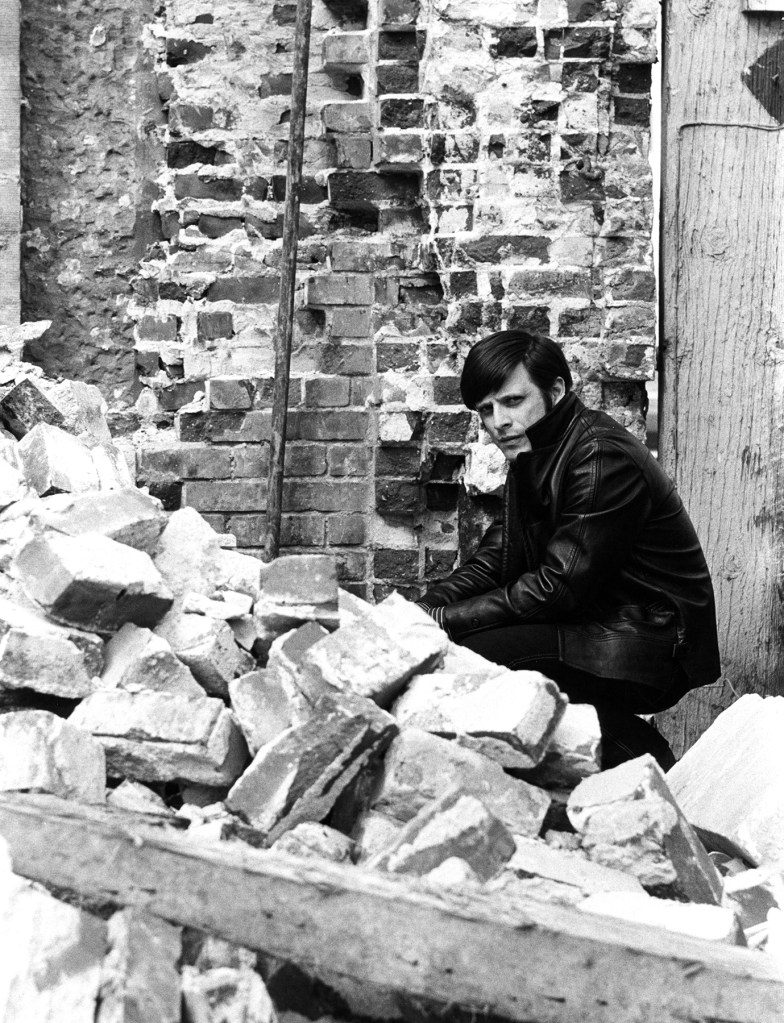
Harlan Ellison, 1969.
Roger Conrad
We talk for a few minutes about the work, about writing, about the difference between being edgy (which Harlan was) and being cool (which he was not). “He used to say, ‘If you’re cool, you’re boring,’ right?” And Harlan was a lot of things, but never boring.
I ask him about The Last Dangerous Visions. About why it might be important right now. And he answers fast, like it’s been on his mind. Like he’d been chewing it over in his head for a while.
“I hope that people find it,” he says. “I hope that they read it. I hope they use it to find the other Harlans out there now — the ones seeing the future, who can warn us about what’s coming in the next 50 years.”
He’s right, of course. Because that’s exactly, specifically, why TLDV matters now. Because it is a 429-page early warning system — a project begun in a different age to warn us of what was on the horizon if we were smart enough to look for it, completed now and ringing the alarm about what’s coming next. Robots, AI, the lure of authoritarianism and its crushing power, the dangers of the orthodox view and the sterile loneliness of the smooth, plastic, technocratic future.
Harlan Ellison was not a perfect man. He did some awful things, particularly later in his life, the most public of which was groping fellow writer Connie Willis on stage, in front of an audience, at WorldCon in 2006 (a thing some fans will never forgive him for). He slewed wildly between being a recluse and dropping his pants at parties with his friends, and while some of his behavior can be explained (but not excused) by a lifetime of undiagnosed bipolar disorder, Joe talks about all of it, at length, in “Ellison Exegesis,” saying, “I want you to know the Harlan Ellison that I knew, not the mythology, the rumors, or the backroom assassinations. The man himself: flawed, brilliant, generous, maybe a little screwy.”
Or a lot screwy. And sad. And trapped by his own fears, his own illness, his own mortality. Harlan resisted treatment for years. Decades. Terrified that messing with his wiring would screw with his ability to write — as if the illness itself wasn’t doing that already. But his flaws were not the measure of him. Nor were they the beginning or the end of him. They were just a part of him. Harlan stories, for better or worse. And while none of them can be overlooked, The Last Dangerous Visions stands as a testament to Harlan’s best impulses. To his joy, his courage, his tireless championing of the underdog and fervent belief, in Joe’s words, that “the common coin of our shared humanity is glorious.”
Harlan was brave in a moment when bravery was required. And now, in another very similar moment, TLDV comes to warn us that the work is not done. To remind us that the bastards are still out there, bolder than ever. And to inspire us all to be brave in his name, or be content with sinking into the vast obscurity of those who never bothered to say anything at all. It’s a good message, delivered from beyond the grave, half a century late.
And not a minute too soon.


